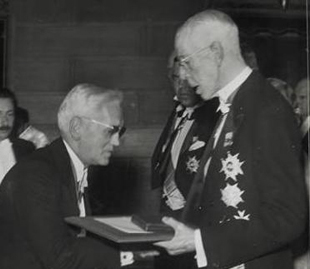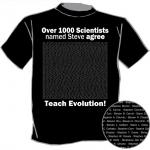It’s October, so it’s Nobel prize season. Last week the Nobel Prize in Medicine was awarded to John O’Keefe, and Edvard and May-Britt Moser for their work on how the brain figures out where you are. Journalists have been calling it your “inner GP S system.” The Physics prize was awarded to Isamu Akasaki, Hiroshi Amano, and Shuji Nakamura, for the invention of blue light-emitting diodes. LEDs are super-efficient, but early LEDs could only emit red and green light. With the addition of the blue wavelengths, engineers could develop light bulbs that emit white light—enabling LEDs to replace incandescent and fluorescent bulbs and brighten up your laptops and cell phones.
S system.” The Physics prize was awarded to Isamu Akasaki, Hiroshi Amano, and Shuji Nakamura, for the invention of blue light-emitting diodes. LEDs are super-efficient, but early LEDs could only emit red and green light. With the addition of the blue wavelengths, engineers could develop light bulbs that emit white light—enabling LEDs to replace incandescent and fluorescent bulbs and brighten up your laptops and cell phones.
Three of these scientists were born in Japan, two in Norway, and one in the United States. The oldest was born in 1929, the youngest in 1963. But I bet there’s one thing they all have in common. Somewhere along the line—in middle school, high school, or perhaps as late as college—a science teacher captured their imagination, nurtured their curiosity, or provided an outlet for their passion for solving mysteries. That teacher changed their lives and, by virtue of their discoveries, changed our lives, too.
The National Center for Science Education has been defending the teaching of good science for over 30 years, helping parents when they find out that creationism is being taught or climate change isn’t; and helping teachers being pressured to leave evolution out of the curriculum or to “teach both sides” on climate change. So we know just how important science teachers are, and how challenging their work can be. But how often do we take a moment to highlight the impact that science teachers can have?
And so begins a new series of posts sharing stories told to us by scientists, elected officials, journalists, and others who were turned on to the world of science by a middle or high school teacher. NCSE will be actively seeking out these stories. If you have one, please contact me at reid@ncse.com so we can set up an interview.
We begin with the story of Dr. Stefano Bertuzzi.
 Dr. Bertuzzi, oh heck, let’s call him Stefano (he is, after all, a proud member of NCSE’s Project Steve), has been the executive director of the American Society for Cell Biology (ASCB) since 2012. Before that he was the Director of the Office of Science Policy, Planning, and Communications at the National Institute of Mental Health. And before that, he was an NIH staff scientist, studying the molecular biology of vision. I met him earlier this year to ask him to consider making ASCB a supporting organization of NCSE. Happily, he agreed, adding ASCB to a long list of prestigious scientific societies who support NCSE’s work. As we talked about NCSE’s vision for the future, I mentioned that we had found that high school teachers often feel isolated from the rest of the scientific community, and yet they play such crucial roles: inspiring the next generation of scientists, and ensuring that all students become scientifically literate. Stefano lit up: “I have a great story for you!” he said.
Dr. Bertuzzi, oh heck, let’s call him Stefano (he is, after all, a proud member of NCSE’s Project Steve), has been the executive director of the American Society for Cell Biology (ASCB) since 2012. Before that he was the Director of the Office of Science Policy, Planning, and Communications at the National Institute of Mental Health. And before that, he was an NIH staff scientist, studying the molecular biology of vision. I met him earlier this year to ask him to consider making ASCB a supporting organization of NCSE. Happily, he agreed, adding ASCB to a long list of prestigious scientific societies who support NCSE’s work. As we talked about NCSE’s vision for the future, I mentioned that we had found that high school teachers often feel isolated from the rest of the scientific community, and yet they play such crucial roles: inspiring the next generation of scientists, and ensuring that all students become scientifically literate. Stefano lit up: “I have a great story for you!” he said.
Some time later, when we could find time for a long phone call, Stefano told me his story—and it is a great one.
Stefano grew up in a small town outside Milan, Italy, where he attended what we would now call the local magnet school. But this school—Liceo Classico—was not a magnet for science and math. Far from it. The prestige subjects at this school were the arts and humanities: Latin, Greek, and Italian literature. Most of the school week was devoted to these subjects, with only two hours each for math and science. This hierarchy affected even the prestige in which teachers were held, with math and science teachers occupying the lowest rung on the ladder. So, no surprise, students didn’t take math and science very seriously, and Stefano was no exception. Until his junior year. That’s when he happened into the classroom of Giuseppina Silva. Her class, he told me, “was focused not on learning facts and the Latin names of plants,” but was instead, “all about asking questions, doing experiments, and figuring out what the results meant.” This was nothing like any science class Stefano had ever taken. He was hooked.
In the next post: How Ms. Silva’s approach to teaching Mendel’s laws put Stefano on his life’s path.

